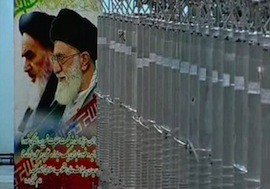Centrifuge Cascades and a Final Deal with Iran
JINSA’s Gemunder Center Iran Task Force issues new brief on proposals to disconnect Iran’s centrifuges as part of a comprehensive agreement on its nuclear program.
Co-Chairs Ambassador Eric Edelman and Ambassador Dennis Ross
Click here to read the full brief

Significant differences remain between Iran and the P5+1 over the parameters of a comprehensive agreement on the Islamic Republic’s nuclear program. In particular, Tehran has resisted agreeing to dismantling any of its existing uranium enrichment infrastructure. With the November 24, 2014, deadline for a final deal looming, U.S. negotiators have reportedly considered several workarounds intended to roll back Iran’s breakout timing while leaving its existing centrifuges in place.
As this Task Force laid out in a September paper, one such possibility would be to limit the total output of Iran’s enrichment facilities (as measured in Separative Work Units, or SWU). Since then, U.S. officials reportedly have considered another route, whereby Iran would disconnect the links between some or all of its thousands of installed centrifuges. Depending on the extent of the disconnections, this could potentially increase Iran’s breakout timing anywhere from a matter of days to months, were it ever to renege on a final deal and reconnect its centrifuges. Unlike the SWU approach, Iran would not necessarily remain a flip of a switch away from sprinting to a bomb. However, as with the SWU approach, Iran would maintain a latent nuclear weapons capability, and could even expand and upgrade its existing nuclear infrastructure without violating a final deal.